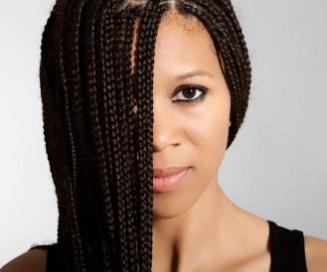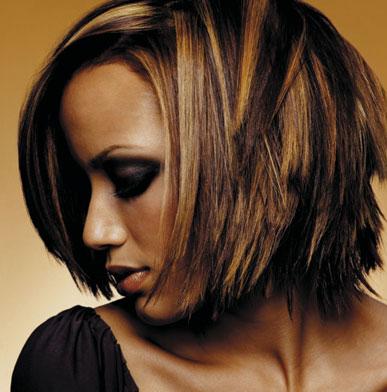Introduction
The ethnic hair care process in Nigeria, Ghana, South Africa, and Ethiopia has a number of peculiarities and considerably varies, depending on the consumer gender, social status, and personal idea about one’s identity and appearance. On average, the process is quite costly and laborious due to the genetic characteristics of the population of the region. In the following paper, the concept map addressing the geographical scope of Nigeria, Ghana, South Africa, and Ethiopia, customer needs, expectations, and disbursements within the process of hair care along with the total opportunity size of the market will be observed.
Overview of the Ethnic Hair Care Process
Overview of Customer Needs Diversification
Women
Economy class – short hair cuts every 2 to 3 weeks (Fig. 1). This category of consumers is covered by entrepreneurs specialising in services (Huang 878).

Standard class – varied hairstyles with the use of hairpieces and braids every 2 to 3 weeks (Fig. 2). In this sector, consumers utilize a row of hair cosmetics needed to work with hair during braiding and the artificial hair that is applied for the braids (Huang 878).

Luxury class – based on personal preferences, consumers in this category resort to traditional hairstyles with hairpieces and braids or straighten hair, as well as use dyeing to achieve the desired colour and shape (Fig. 3). In this sector, the need for hair cosmetics is the highest (Sunderland 66).

Men
Economy class – short hair cuts every 2 to 3 weeks. The sector is covered by the service-providing entrepreneurs (Huang 878).
Standard class and luxury class – short hair cuts, as well as hair styles with braids and dreads or hair styles with hair straitening and hair-dye. The sector is of top interest for cosmetics producers (Huang 878).
Steps
- Regular hair care includes hair cleansing and conditioning to maintain it clean, shiny, moistened, bouncy, silky, and well- manageable (Alexander 117). For consumers who prefer having their hair straight, the use of straightening agents is necessary (Huang 877). For the ethnic population of Nigeria, Ghana, South Africa, and Ethiopia, the subdivision according to the hair types remains similar to other nations of the word – the hair can be dry, dry-damaged, oily, dyed-damaged, and normal; however, the majority of people tend to have normal hair that requires cleansing only 1 or 2 times a week (Alexander 118).
- Consumers who alter hair colour and texture by dyes and perms apply corresponding products every month or so (Huang 877).
- Consumers with braided hair cleanse it once a week. They use hair managing and hair straightening agents along with waxes during the braiding process (Lester 12).
Products
- Shampoos
- Conditioners
- Thermal oil
- Thermal water
- Serums
- Hair sprays
- Waxes
- Gels
- Mousses
- Pomades
- Brilliantine
- “Heat protective” products such as hair silicon
- Keratin or cellulose fibres to cover hair loss
- Hair dyes
- Bleaching agents
- Straightening agents
- Perms
- Relaxants
Dosage
Dosage depends on the characteristics of each particular type of hair cosmetics. In general, 5 to 30 ml of shampoo, conditioner or straightening crème is used depending on the hair length and thickness. The dosage of the cortex hair cosmetics for dyeing or perming is from 20 to 50 ml depending on the length and structure of the client’s hair (Huang 877).
Frequency of Use
Generally, cleansing and conditioning products are used 1 to 2 times a week, while colour and structure adjusting products are applied every 2 to 3 weeks (Huang 877).
The Key Benefits the Customers Want
The customers seek to have the healthy-looking hair with fashion hair styles. Their focus of interest during the shopping for cleansing cosmetics is not mere purification characteristics of a product but its repair, growth stimulating, increasing the tensile strength, and reducing oxidative damage properties (Alexander 117). In addition, consumers want to shorten the time they spend on the hair care, but at that, their main objective is to have smooth, manageable, and more lustrous hair looking naturally (Madnani and Kaleem 655).
The Average Customer Disbursements
The average customer disbursements depend on a row of factors including gender, income level, social status, personal preferences, and personal hair characteristics (Madnani and Kaleem 655). In the economy segment, men and women spend similar amounts of around $10 to 50 US dollars a month. In the middle segment, the sums for female customers range from $50 to 400 US dollars a month and for the male customers, they are from $20 to 100 US dollars. In the luxury sector, the spending by the female and male consumers varies from $200 to 900 US dollars or more in dependence to customer needs (Madnani and Kaleem 655).
Total Opportunity Size
According to varied sources, the market opportunity size may amount to $3.8 billion US dollars a month (Huang 877; Madnani and Kaleem 667)
Conclusion
The ethnic hair care market in Nigeria, Ghana, South Africa, and Ethiopia is attractive for entrepreneurs due to the peculiarities of hair care process in those lands and the genetic factors affecting the customer choices. The market is characterised by the width and depth of customer needs, as well as the considerable opportunity size.
Works Cited
Alexander, Antoinette. “Mass Market Pushes Toward Ethnic Hair Care, Naturally.” Drug Store News 31.10 (2009): 117-122. Print.
Huang, Yan. “The Influence of Ethnic Attributes on Ethnic Consumer Choice of Service Outlet.” European Journal of Marketing 47.5 (2013): 877-98. Print.
Lester, Neal. “The Why and the Where of Hair.” The Lion and the Unicorn 37.2 (2013): 12-18. Print.
Madnani, Nina, and Kaleem Khan. “Hair Cosmetics.” Indian Journal of Dermatology, Venereology and Leprology 79.5 (2013): 654-67. Print.
Sunderland, Ruth. “Why the Beauty Trade Matters.” Daily Mail: 66. 2012. Print.